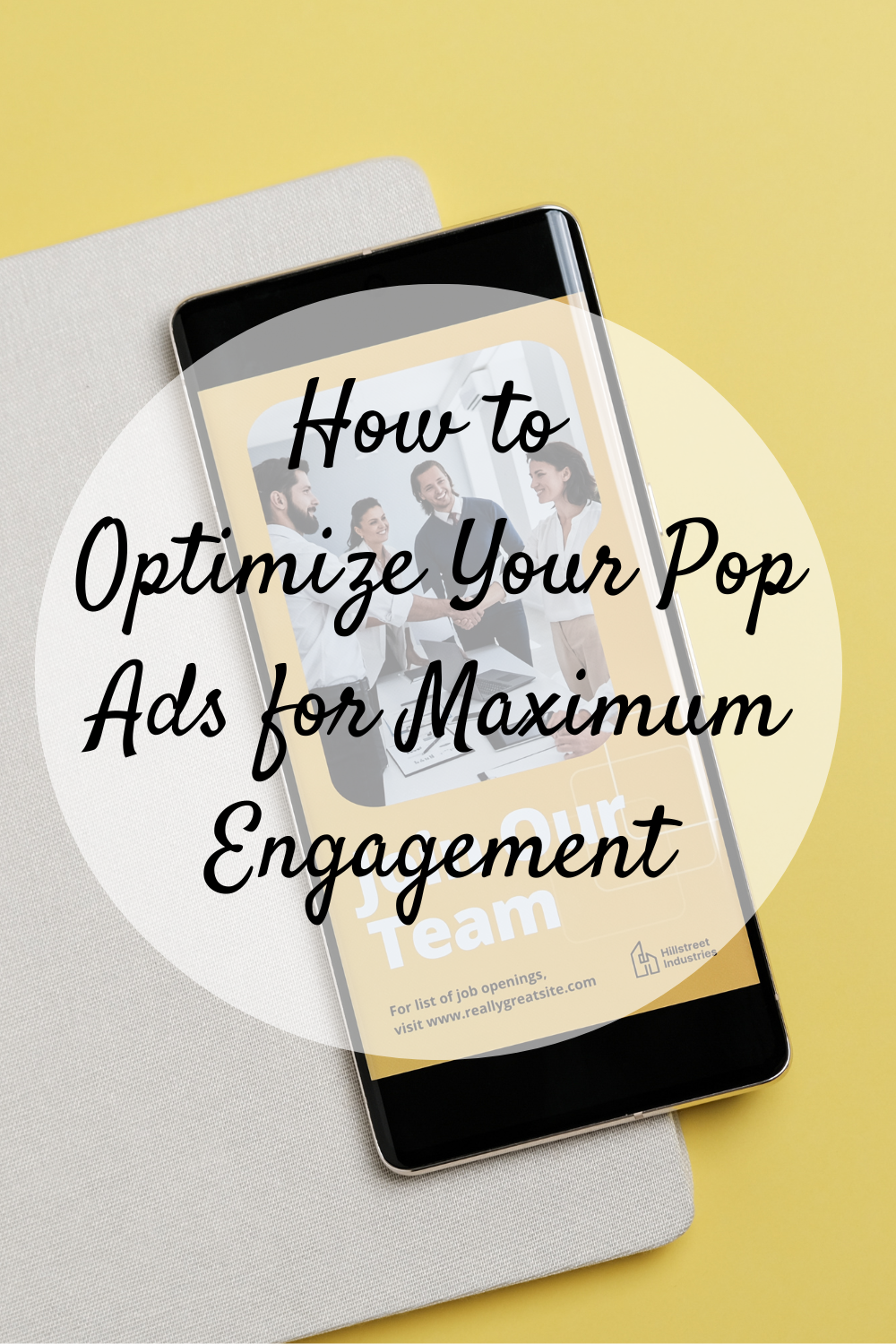
Pop ads can be an incredibly effective way to grab attention, boost conversions, and drive traffic—if they’re done right. But let’s be honest, when they’re poorly executed, they’re just plain annoying. Nobody wants to be bombarded with pop-ups that feel intrusive or irrelevant. The key is optimizing them in a way that feels natural, adds value, and actually encourages engagement rather than frustration.
Understanding Why Pop Ads Work
Unlike static banners that often get ignored, pop ads force interaction. Whether it’s clicking, closing, or engaging, the user has to make a choice. This is why platforms like Galaksion, the best pop ads network for advertisers, are such powerful tools for lead generation, special promotions, and brand visibility. But their effectiveness depends on the execution. A pop ad that appears at the wrong moment or disrupts the user experience will push people away instead of pulling them in.
Make Your Ads Feel Relevant, Not Random
Nobody wants to be interrupted by an ad that has nothing to do with what they’re doing. The best pop ads feel like a natural extension of the page rather than a distraction. If someone is browsing a product category, show them a discount on those exact products. If they’re reading a blog post, offer them a relevant freebie, like a downloadable guide or an exclusive tip sheet.
Pop ads that match user intent get more engagement—because they actually feel useful. Instead of being an interruption, they enhance the experience by offering something the user might genuinely want.
Get the Timing Right
Timing makes or breaks a pop ad. If it appears too soon, it’s intrusive. Too late, and the user might have already lost interest. The best-performing ads strike a balance, appearing at a point where they add value rather than frustration.
Exit-intent pop-ups are a great example of smart timing. These trigger when the user is about to leave the page, making them a last chance to grab attention without interfering with the browsing experience. Another effective approach is scroll-based pop-ups, which only appear after a user has engaged with a certain portion of the page. This way, the ad reaches people who are already interested rather than driving them away.
Testing different timing strategies is key. What works on one page or audience might not work on another, so experimenting with different triggers can help you find the sweet spot.
Keep the Design Clean and Non-Intrusive
A cluttered, overwhelming pop ad is a guaranteed way to lose engagement. If a user feels visually bombarded, they’ll close the ad without even reading it. The best pop ads use simple, high-contrast designs with clear messaging.
A strong, benefit-driven headline should grab attention instantly, while a short and direct supporting message explains why the user should care. The call-to-action (CTA) needs to be obvious and actionable—whether it’s “Claim Your Discount” or “Download Now.” And just as important as the CTA is the ability to exit. If users feel trapped, they’re far more likely to leave your site altogether rather than engage with your ad.
Keep the Message Short and Actionable
Nobody has time to read a paragraph of text inside a pop ad. The message needs to be clear, direct, and instantly understandable. A great pop ad answers three questions in seconds:
- What’s being offered?
- Why should the user care?
- What’s the next step?
Overcomplicating things kills engagement. A simple offer with a strong CTA always outperforms an overly wordy ad.
A/B Testing is Essential
Even the best-designed ads can underperform if they’re not tested properly. A/B testing lets you experiment with different elements to see what actually works.
Try different headlines to see which ones drive more clicks. Test various placements—some ads perform best in the center of the screen, while others are more effective in a corner. Small design changes, like adjusting colors, fonts, or button styles, can also make a big impact on performance.
The key is to track the right metrics. Click-through rate (CTR) shows how many people interact with the ad, while conversion rate measures how many actually take action. If an ad has a high CTR but low conversions, the offer might not be compelling enough. If engagement is low across the board, the design or timing might need tweaking.
Make Sure Your Ads Are Mobile-Friendly
Most traffic today comes from mobile devices, so if your pop ads aren’t optimized for smaller screens, you’re losing engagement. A pop ad that looks great on desktop but feels clunky on mobile will do more harm than good.
Mobile-friendly ads need to be easy to tap, quick to load, and properly placed so they don’t interfere with navigation. If an ad covers too much of the screen or makes it difficult to access content, users will leave rather than engage.
Offer Something of Real Value
At the end of the day, people engage with ads when they feel like they’re getting something worthwhile. The best-performing pop ads don’t just ask for attention—they offer something in return.
Exclusive discounts, free resources, early access to new products—these are all great ways to make users feel like they’re getting something valuable rather than just being marketed to. If the offer isn’t appealing, the ad won’t perform well, no matter how well it’s designed.
Don’t Overwhelm Users
One of the biggest reasons people hate pop ads is because they feel bombarded. If the same user sees your pop ad multiple times in one session, it’s going to be more annoying than effective.
Using frequency capping can prevent this. Limiting how often a user sees the same pop ad reduces frustration and makes each appearance feel more intentional. Avoid aggressive animations or flashing elements—these don’t make an ad more effective; they just make it more irritating.
Track Performance and Keep Improving
Optimization isn’t a one-time thing. Even a high-performing ad will eventually lose effectiveness, which is why ongoing tracking and adjustments are essential.
Pay attention to engagement metrics, adjust based on performance, and keep testing new variations. The best pop ads aren’t just well-designed—they’re continuously refined to keep engagement high.
Turn Pop Ads Into an Asset, Not an Annoyance
When done right, pop ads can be an incredibly powerful tool for driving engagement and conversions. The key is balancing attention-grabbing design with user-friendly execution. Keep them relevant, well-timed, and visually appealing, and you’ll turn pop ads into a valuable asset rather than an interruption.





Leave a Reply